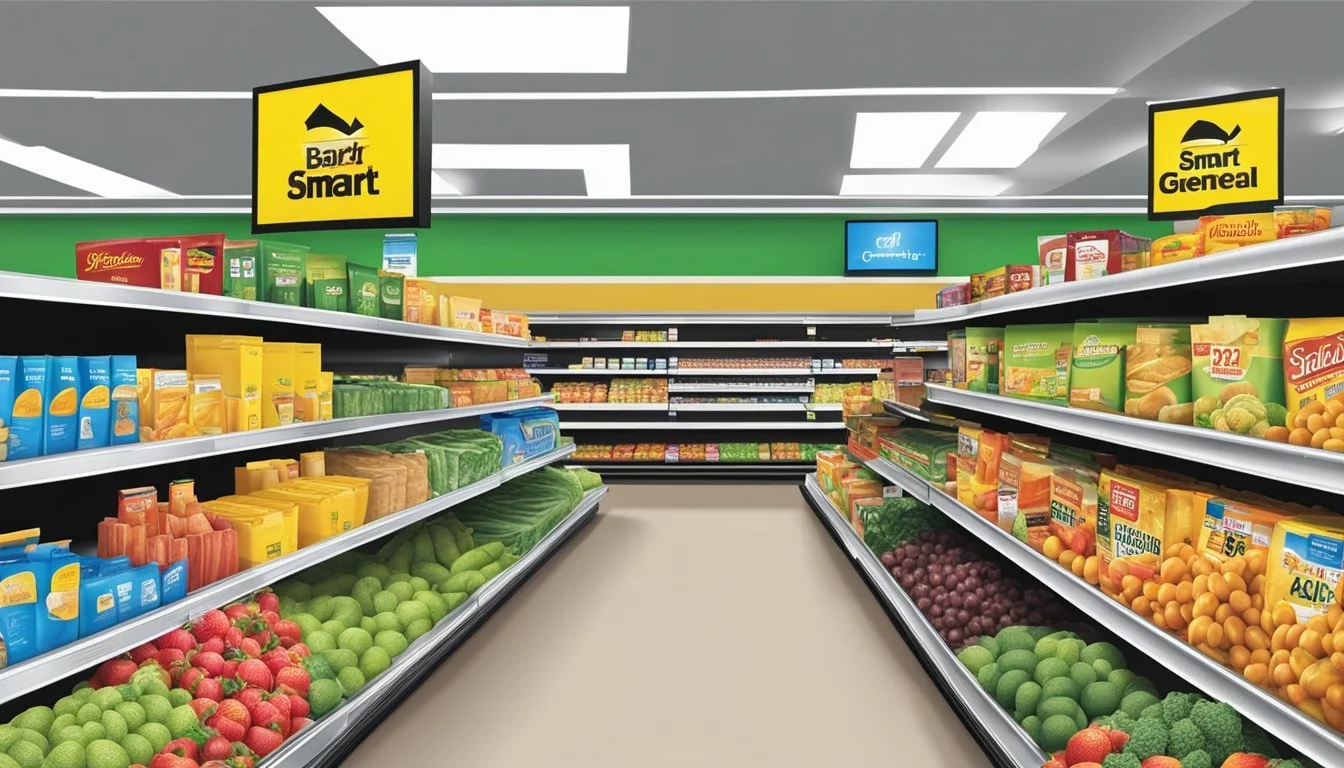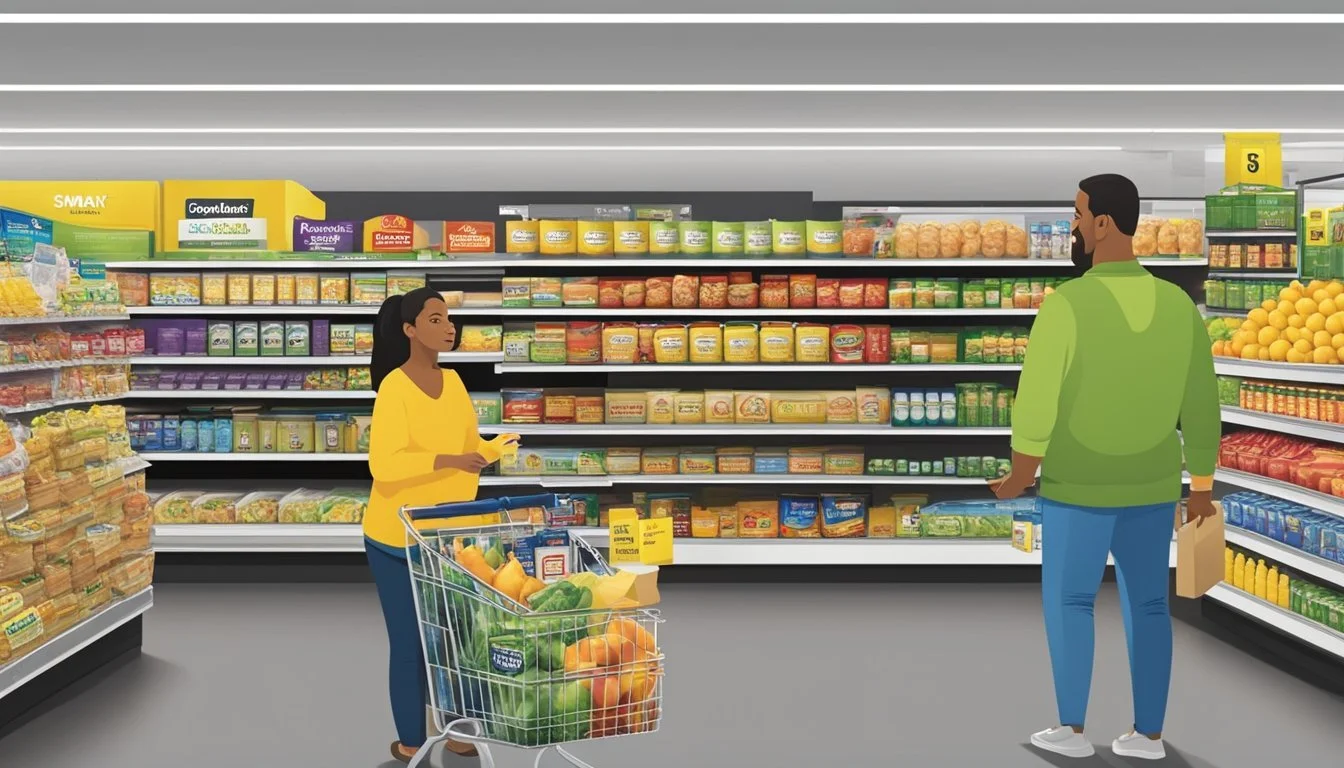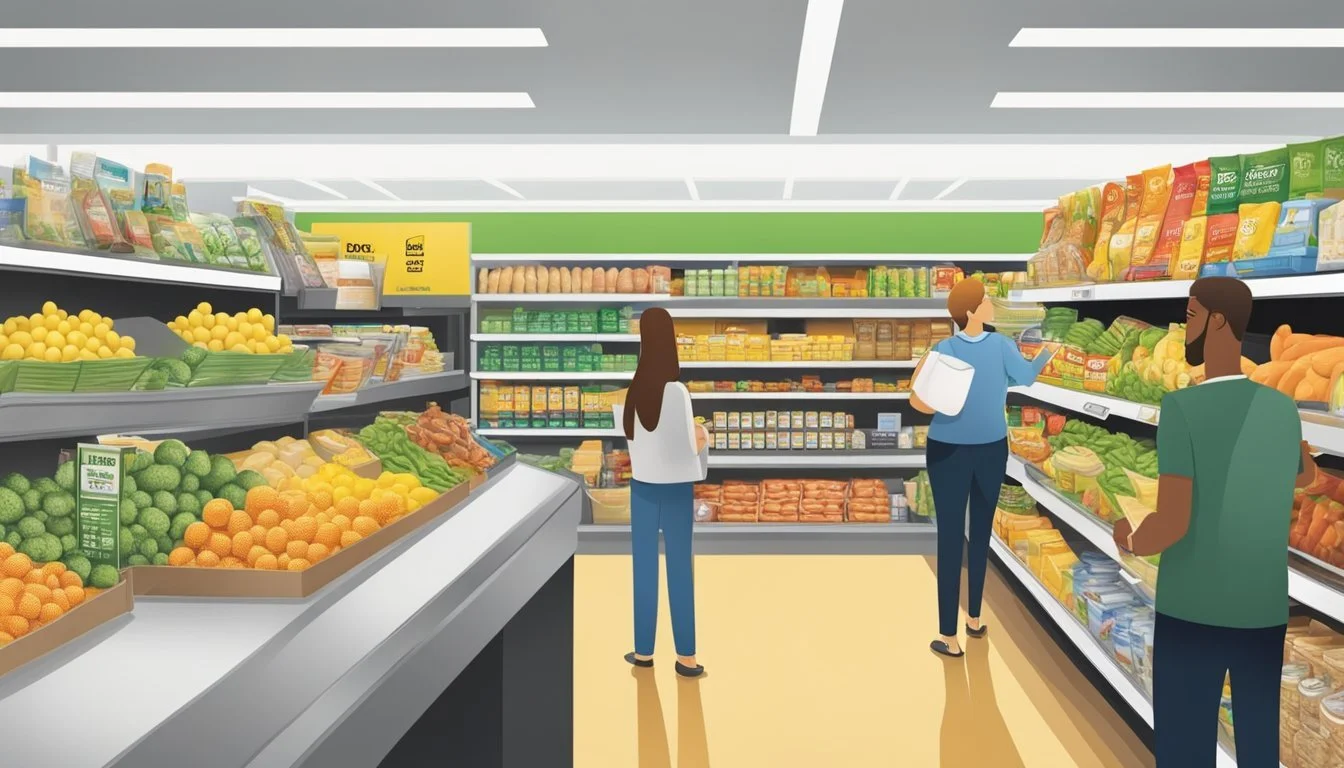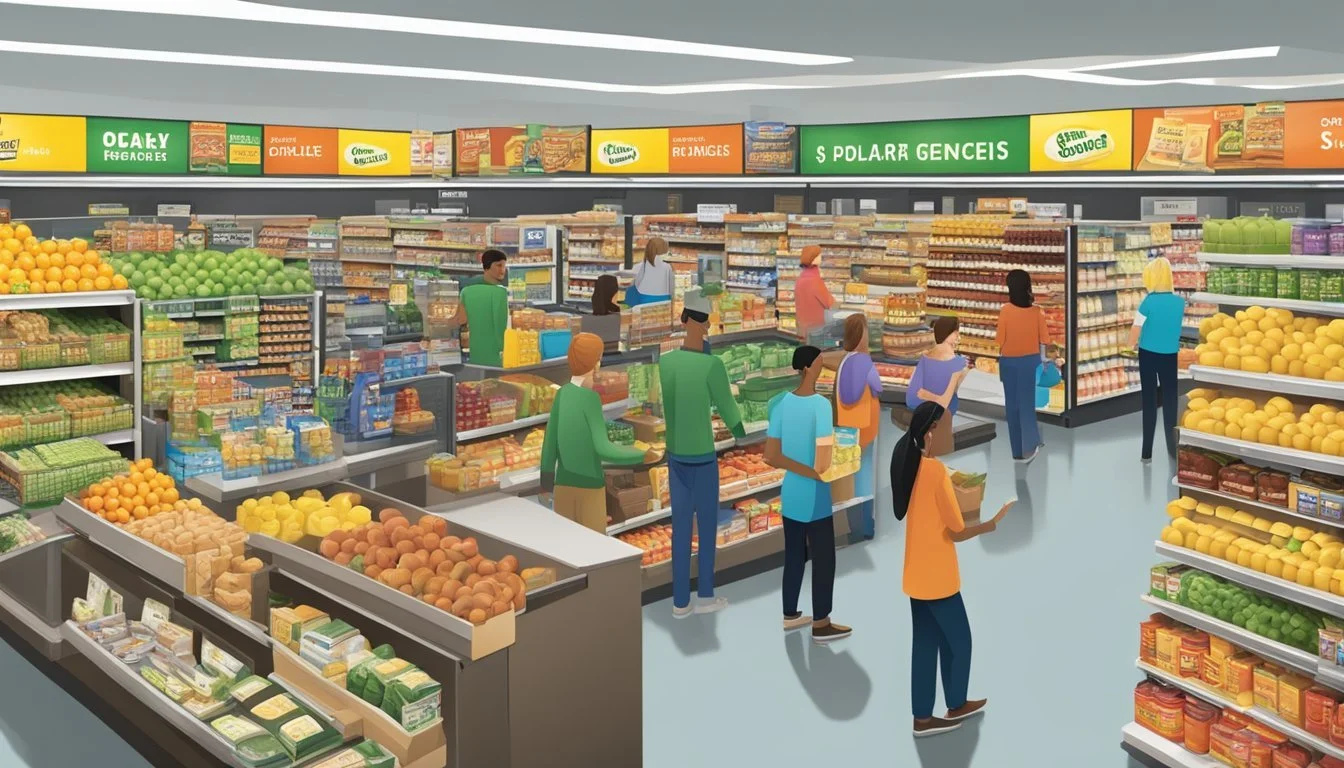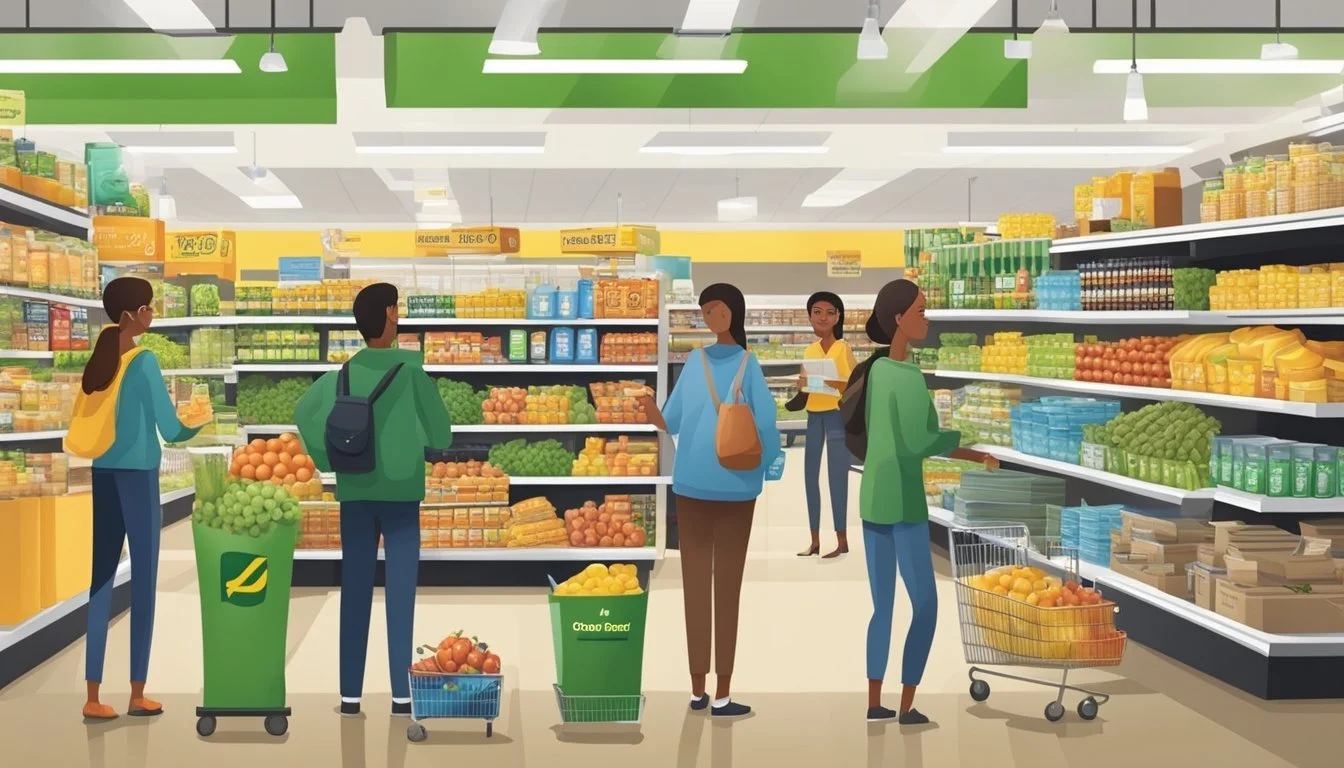Dollar General vs Smart & Final
A Price and Quality Comparison
Dollar General and Smart & Final are two popular discount grocery chains that offer budget-friendly options for shoppers. Both stores aim to provide affordable groceries and household essentials, but they have distinct differences in their product selection and pricing strategies.
Dollar General focuses primarily on offering a wide range of items at low prices, with many products priced at $1 or less. The store carries a mix of groceries, household goods, and personal care items. Smart & Final, on the other hand, positions itself as a hybrid between a warehouse club and a traditional supermarket, offering bulk items alongside individual products.
When comparing overall prices, Smart & Final tends to offer slightly lower costs on groceries, typically around 14% below the average grocery store prices. This price advantage can lead to significant savings for families who shop regularly. However, Dollar General's convenience and ubiquity, with over 18,000 locations across the United States, may make it a more accessible option for many shoppers.
Company Overviews
Dollar General and Smart & Final are two distinct retail chains with unique histories and business models. Both companies have grown significantly over the years, catering to different customer segments and retail needs.
Dollar General: A Brief History
Dollar General began in 1939 as J.L. Turner and Son, Wholesale in Scottsville, Kentucky. The company rebranded to Dollar General in 1955, focusing on no-frills stores and low prices. Today, Dollar General operates over 18,000 stores across 47 states.
The chain specializes in offering everyday essentials at affordable prices. Dollar General's product mix includes groceries, household items, health and beauty products, and apparel.
In recent years, Dollar General has expanded its fresh food offerings through DG Markets, aiming to serve as a more comprehensive grocery option in rural areas.
Smart & Final: Background and Growth
Smart & Final traces its roots back to 1871 when it was founded in Los Angeles, California. The company initially operated as a small grocery store before evolving into a warehouse-style retailer.
Smart & Final targets both household and business customers, offering bulk items alongside individual products. The chain operates over 250 stores, primarily in the western United States.
Known for its "warehouse club" feel without membership fees, Smart & Final provides a wide range of groceries, foodservice items, and janitorial supplies. The company has expanded its presence in recent years through acquisitions and the launch of its Smart & Final Extra! format, which offers an extended selection of products.
Store Locations and Accessibility
Dollar General and Smart & Final have distinct approaches to their store locations, impacting accessibility for different customer segments. Both chains strategically position their outlets to serve specific community needs.
Dollar General's Presence in Communities
Dollar General boasts an extensive network of over 18,000 stores across 47 states. The company focuses on rural and suburban areas, often establishing stores in communities with limited retail options. In many cases, Dollar General serves as the primary source for groceries and household essentials in small towns.
Dollar General's DG Market format aims to provide fresh food access in underserved areas. These stores offer produce and expanded grocery selections, targeting food deserts where traditional supermarkets are scarce. As of 2024, over 5,400 Dollar General locations carry produce, many in USDA-defined food deserts.
Smart & Final's Urban and Metro Reach
Smart & Final operates primarily in western states, with a strong presence in California. The chain targets urban and metro areas, positioning its stores to serve both household consumers and small businesses.
Smart & Final's store count is significantly smaller than Dollar General's, with approximately 250 locations. This focused approach allows the company to maintain a foothold in densely populated regions.
In urban centers, Smart & Final often places stores in centralized locations accessible by public transportation. The chain's presence extends to some suburban areas, particularly those with a mix of residential and commercial zones.
Product Selection and Range
Dollar General and Smart & Final offer distinct product ranges to cater to different customer needs. Their inventories reflect their unique positioning in the grocery market.
Assortment of Goods at Dollar General
Dollar General focuses on providing essential household items and packaged foods at affordable prices. Their shelves are stocked with a variety of shelf-stable products, including canned goods, pasta, and snacks. The store offers a limited selection of fresh produce, typically featuring basic items like bananas, potatoes, and onions.
Dollar General's dairy section includes milk, eggs, and cheese. Frozen foods are available, with an emphasis on convenient meal options. The store carries a range of personal care items, cleaning supplies, and basic home goods.
While the selection may not be extensive, Dollar General aims to cover everyday needs efficiently.
Smart & Final's Inventory
Smart & Final provides a broader range of products, catering to both household and business customers. Their produce section is more comprehensive, offering a variety of fresh fruits and vegetables including tomatoes, carrots, and avocados.
The store's meat department features both packaged and fresh-cut options. Smart & Final stocks a wide array of dairy products and a substantial frozen food selection. Their inventory includes bulk-sized items, appealing to larger families or small businesses.
Smart & Final's shelves contain an extensive selection of packaged foods, baking supplies, and international cuisine items. The store also offers a modest range of organic and specialty products, though not as extensive as some upscale grocery chains.
Pricing and Affordability
Dollar General and Smart & Final employ distinct pricing strategies to attract budget-conscious shoppers. Each store offers unique ways for customers to save money on groceries and household essentials.
Analyzing Dollar General's Price Structure
Dollar General focuses on everyday low prices across its product range. Many items are priced at $1 or less, making it easy for shoppers to stick to a tight budget. The store often features $1 deals on name-brand products, allowing customers to save on familiar items. Dollar General also offers a digital coupon program, where shoppers can load coupons to their account for additional savings at checkout.
Dollar General's private label brands provide cheaper alternatives to national brands without sacrificing quality. These store-brand products typically cost 20-30% less than their name-brand counterparts. The company's small-format stores help keep operational costs down, enabling them to maintain competitive prices.
Smart & Final's Pricing Strategy
Smart & Final takes a different approach, positioning itself as a hybrid of a discount grocery store and a warehouse club. The store offers bulk-sized products at competitive prices, appealing to both families and small businesses. Smart & Final's "club-pack" sizes provide savings for customers willing to buy in larger quantities.
Smart & Final's pricing structure includes a mix of everyday low prices and weekly specials. The store's circular features rotating discounts on various items, allowing savvy shoppers to stock up when prices are lowest. Smart & Final's store-brand products, including First Street and Sun Harvest, offer quality alternatives at lower price points than national brands.
The company's larger store format allows for a wider product selection, including fresh produce and meat departments with competitive pricing. Smart & Final also offers a loyalty program that provides personalized discounts and cash-back rewards to frequent shoppers.
Shopping Experience
Dollar General and Smart & Final offer distinct shopping environments tailored to their target customers. Each store's layout and ambience shape the overall experience for shoppers.
Dollar General's Store Layout and Ambience
Dollar General stores typically occupy smaller spaces in strip malls or standalone buildings. The aisles are narrow and packed with a variety of products. Signage is simple, often handwritten, emphasizing low prices.
Shelves are stocked with a mix of groceries, household items, and personal care products. The store concept focuses on convenience and affordability. Lighting tends to be basic fluorescent, creating a no-frills atmosphere.
Checkout areas are compact, sometimes leading to lines during busy periods. Cleanliness can vary between locations, but most maintain a tidy appearance despite high customer traffic.
The Shopping Journey at Smart & Final
Smart & Final stores are larger, resembling traditional supermarkets. Wide aisles accommodate both individual shoppers and bulk buyers. The layout is organized by product categories, making navigation easier for customers.
Produce sections are prominent, offering fresh fruits and vegetables. Bulk bins and large package sizes cater to businesses and families. Lighting is brighter and more inviting than typical discount stores.
Checkout areas are spacious, with multiple lanes to handle various customer needs. The overall ambience is clean and well-maintained, creating a more upscale feel compared to discount competitors.
Smart & Final's store concept blends elements of a warehouse club with a neighborhood grocery store. This unique approach attracts a diverse customer base, from small business owners to budget-conscious families.
Promotions and Savings Opportunities
Dollar General and Smart & Final offer various ways for customers to save money on their grocery shopping. Both stores provide recurring deals and competitive offers to attract budget-conscious shoppers.
Recurring Deals at Dollar General
Dollar General runs weekly promotions on select items across different product categories. Customers can find these deals in the store's digital and print circulars. The retailer often features $1 discounts on popular brands and household essentials.
DG Digital Coupons allow shoppers to save directly through the Dollar General app. These coupons can be applied to both in-store and online purchases, offering additional savings on already low-priced items.
Dollar General's DG Pickup service enables customers to order online and collect their groceries curbside. This service often includes exclusive promotions for first-time users.
Competitive Offers by Smart & Final
Smart & Final provides weekly ads featuring discounted prices on bulk items and fresh produce. These deals typically run from Wednesday to Tuesday, allowing customers to plan their shopping trips accordingly.
The store's loyalty program, Smart Rewards, offers personalized savings and digital coupons. Members earn points on purchases, which can be redeemed for discounts on future shopping trips.
Smart & Final frequently runs promotions on their private label products, providing budget-friendly alternatives to national brands. These house brands often come with significant savings compared to similar items.
Customer Loyalty and Retention
Grocery stores employ various strategies to foster customer loyalty and encourage repeat business. Both Dollar General and Smart & Final have implemented unique approaches to retain their customer base and build long-term relationships.
Loyalty Programs and Benefits at Dollar General
Dollar General's loyalty program, DG Digital Coupons, offers customers exclusive discounts and personalized savings. Shoppers can access digital coupons through the Dollar General app or website, applying them to their purchases for instant savings. The company leverages its first-party dataset to tailor offers based on individual shopping habits.
Dollar General's digital engagement efforts extend to personalized marketing emails and targeted promotions. By analyzing transaction data, they create customized experiences for their consumers. The retailer also operates a retail media network (DGMN), allowing brands to reach Dollar General shoppers with relevant advertisements.
Smart & Final's Approach to Customer Loyalty
Smart & Final focuses on providing value to both individual consumers and business customers through its Smart Rewards program. Members earn points on purchases, which can be redeemed for discounts on future shopping trips. The program also includes special promotions and member-only pricing on select items.
To cater to its diverse customer base, Smart & Final offers bulk purchasing options and a wide range of products. This approach aims to meet the needs of both households and small businesses, fostering loyalty through convenience and cost-effectiveness.
Smart & Final emphasizes customer service as a key component of its retention strategy. Well-trained staff and efficient checkout processes contribute to a positive shopping experience, encouraging customers to return.
Alternatives and Competitors
Dollar General and Smart & Final face stiff competition in the grocery and discount retail space. Several major players vie for market share, offering various pricing strategies and shopping experiences.
Competing with Walmart and Target
Walmart and Target stand as formidable rivals to both Dollar General and Smart & Final. Walmart's extensive network of supercenters and neighborhood markets provides one-stop shopping for groceries and general merchandise. The retail giant leverages its massive scale to offer competitive prices across a wide range of products.
Target, while positioned as a more upscale alternative, has expanded its grocery offerings in recent years. The company's focus on trendy, affordable items and convenient shopping experiences attracts a diverse customer base.
Both Walmart and Target have invested heavily in e-commerce and curbside pickup options, challenging Dollar General and Smart & Final to keep pace with evolving consumer preferences.
The Rise of E-commerce Giants Like Amazon
Amazon's entry into the grocery market has disrupted traditional retail models. The e-commerce leader's acquisition of Whole Foods Market in 2017 marked a significant push into physical retail spaces.
Amazon Fresh stores and the company's grocery delivery services compete directly with brick-and-mortar retailers. The convenience of online ordering and quick delivery appeals to time-strapped consumers.
Amazon's vast product selection and competitive pricing put pressure on traditional grocery chains and discount retailers to innovate and improve their digital presence.
Other Competitors in the Market
Several other retailers compete in the grocery and discount space. Aldi, known for its no-frills approach and low prices, has expanded rapidly in the U.S. market. Grocery Outlet offers discounted brand-name products, appealing to bargain hunters.
Regional chains like FoodMaxx, Foods Co, and Lucky cater to specific geographic areas. Safeway and Trader Joe's occupy different market segments, with Safeway focusing on traditional supermarket offerings and Trader Joe's emphasizing unique, private-label products.
Warehouse clubs such as Costco and Sam's Club attract customers seeking bulk purchases at discounted prices. Sprouts Farmers Market targets health-conscious shoppers with its focus on natural and organic products.
Future Trends and Industry Outlook
The grocery industry is rapidly evolving, driven by technological advancements and shifting consumer preferences. Economic factors continue to play a crucial role in shaping shopping behaviors and retailer strategies.
Innovations in Retail and Grocery Shopping
AI and automation are transforming the grocery landscape. Retailers are implementing advanced algorithms to personalize shopping experiences and optimize inventory management. Self-checkout systems and cashier-less stores are becoming more prevalent, reducing wait times and operational costs.
E-commerce and grocery delivery options have seen significant growth, accelerated by the pandemic. Many stores now offer curbside pickup and home delivery services to cater to convenience-seeking customers.
Mobile apps are enhancing in-store experiences, providing digital coupons, product information, and navigation assistance. Some retailers are experimenting with augmented reality to create immersive shopping environments.
Economic Factors Affecting Grocery Choices
Inflation continues to influence consumer behavior, with many shoppers seeking value-oriented options. Discount chains and private label products are gaining market share as budget-conscious customers look for ways to stretch their dollars.
Economic uncertainty has led to increased price sensitivity. Retailers are responding by expanding their product ranges to include more affordable options and implementing dynamic pricing strategies.
The rise of remote work has altered shopping patterns, with some consumers making fewer but larger purchases. This shift has prompted stores to adapt their layouts and product offerings to accommodate changing needs.

